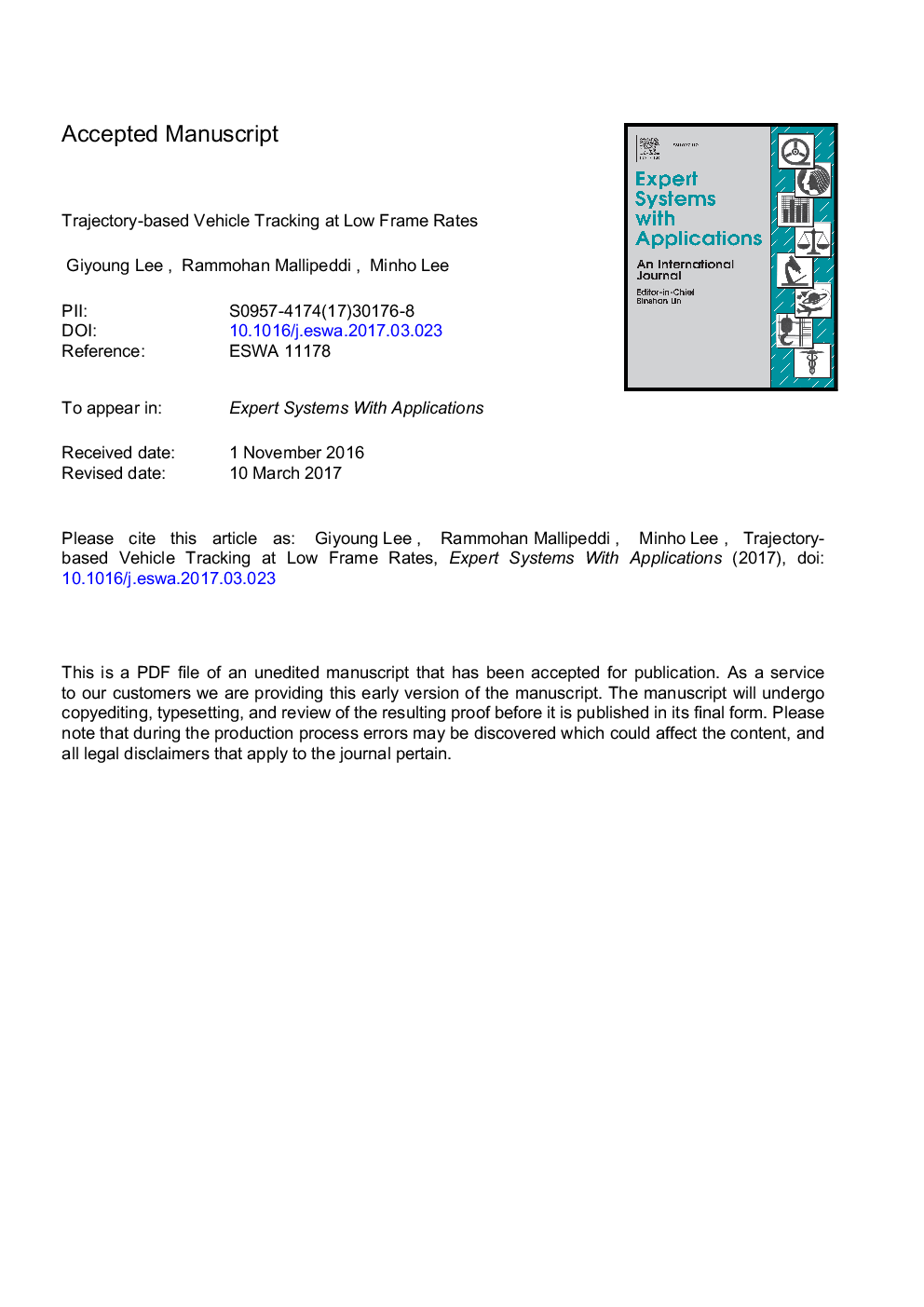| Article ID | Journal | Published Year | Pages | File Type |
|---|---|---|---|---|
| 4943174 | Expert Systems with Applications | 2017 | 26 Pages |
Abstract
In smart cities, an intelligent traffic surveillance system plays a crucial role in reducing traffic jams and air pollution, thus improving the quality of life. An intelligent traffic surveillance should be able to detect and track multiple vehicles in real-time using only limited resources. Conventional tracking methods usually run at a high video-sampling rate, assuming that the same vehicles in successive frames are similar and move only slightly. However, in cost effective embedded surveillance systems (e.g., a distributed wireless network of smart cameras), video frame rates are typically low because of limited system resources. Therefore, conventional tracking methods perform poorly in embedded surveillance systems because of discontinuity of the moving vehicles in the captured recordings. In this study, we present a fast and light algorithm that is suitable for an embedded real-time visual surveillance system to detect effectively and track multiple moving vehicles whose appearance and/or position changes abruptly at a low frame rate. For effective tracking at low frame rates, we propose a new matching criterion based on greedy data association using appearance and position similarities between detections and trackers. To manage abrupt appearance changes, manifold learning is used to calculate appearance similarity. To manage abrupt changes in motion, the next probable centroid area of the tracker is predicted using trajectory information. The position similarity is then calculated based on the predicted next position and progress direction of the tracker. The proposed method demonstrates efficient tracking performance during rapid feature changes and is tested on an embedded platform (ARM with DSP-based system).
Keywords
Related Topics
Physical Sciences and Engineering
Computer Science
Artificial Intelligence
Authors
Giyoung Lee, Rammohan Mallipeddi, Minho Lee,
